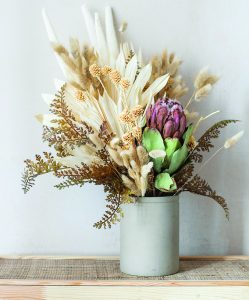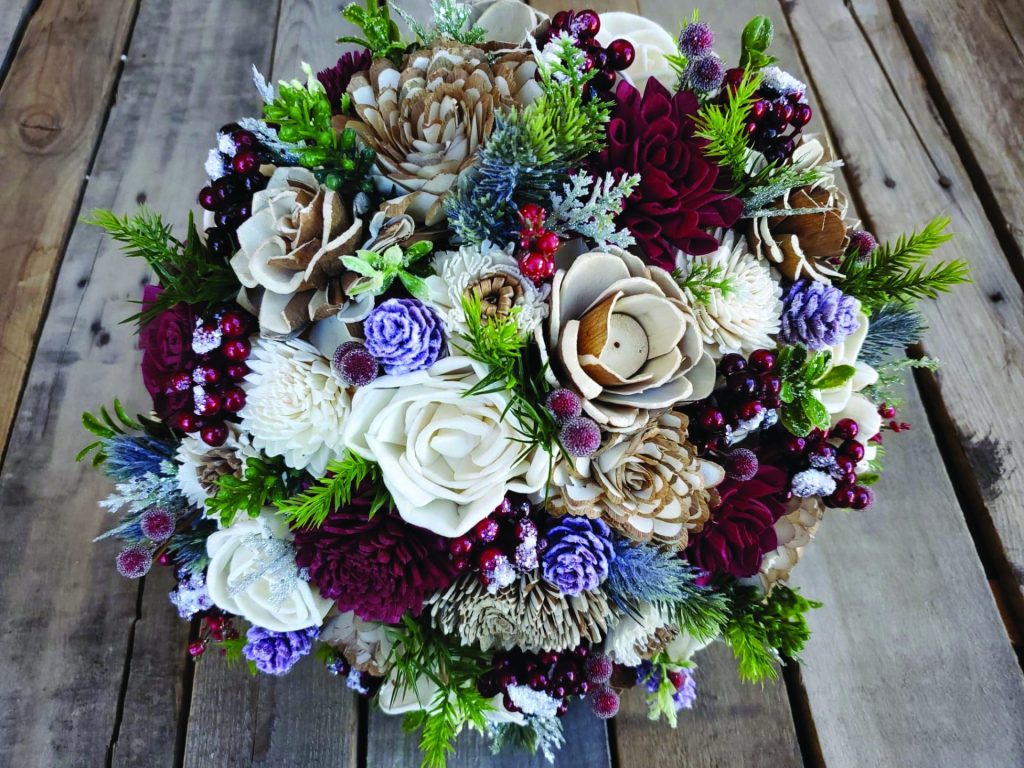Surprising Winter Floral Arrangements
21 Dec 2021
Four fun ways to fill the house with flowers long after our beds have gone dormant
By Sara Bruskin
By growing plants with a variety of bloom times, avid gardeners can get a near-constant supply of cut flowers during the warmer months. But what to do when the first frost gets the best of your blooms? Branch out with these alternatives to bring the beauty of florals into your home all season long.

Cut and Dry
There’s something about dried flowers that makes a house feel like a cozy cottage. Along with rustic charm, they offer reminders of the past growing season and spark anticipation of the next. To air-dry full bouquets or individual flowers that you plan on arranging, simply hang them upside down in a dry location (which, in Colorado, is pretty much anywhere except the bathroom). Drying them upside down ensures they maintain straight stems rather than bent, drooping forms.
Some flowers hold onto their colors better than others while drying, and those with low moisture levels will hold their shape better. If you’re planning a cut-flower garden for next season, consider adding varieties that dry well, such as gomphrena, lavender, cornflower, amaranth, strawflower and verbena.

Wooden’t Have Guessed
Wood flowers made from a marsh plant called sola (or Aeschynomene aspera if you’re brave enough to pronounce it) have gained popularity in recent years. The wood is very light and has a soft texture, making it flexible enough to be cut into thin petals, dyed and assembled into complex flowers. The effect is impressively realistic, and because sola plants grow quickly, their wood is a sustainable material. Your bouquets will be compostable, but will last for many years if you treat them with care.
Sola wood flowers have become especially popular for weddings, and they’re also lifesavers for holiday dinners—buying centerpieces far in advance without the risk of wilting flowers makes holiday preparations that much easier. You can then store the arrangements and reuse them next year.
 Forcing the Matter
Forcing the Matter
For a simple and rewarding project, grow your own flower bulb arrangements indoors. Forcing flower bulbs is a process of tricking them into blooming much earlier than they would outdoors by simulating spring conditions. Amaryllis bulbs are the most well-known for this purpose because of their Christmas popularity, but you can force many spring bulbs into a winter bloom: daffodils, hyacinths, tulips, crocuses, -anemones and more.
Different flowers will have different guidelines for forcing, but the general process involves potting bulbs in a moist planting medium and leaving the pot somewhere cold and dark (occasional watering may be necessary). After the recommended number of weeks, place the pot in a warm, sunny spot to trigger an early bloom. With very little maintenance required, forced bulbs bring lots of color and cheer to the long winter months.

Fabric Florals
Flowers crafted out of fabric have come a long way in recent years. With fine details and subtle color variations, they make beautiful arrangements and wreaths. “It’s always nice to have something in your home that’s botanical,” says Lori Wheat of Lafayette Florist, “whether it’s real and fresh or what we call ‘permanent botanicals.’”
Their permanent botanicals come as complete arrangements, or you can choose individual flowers for craft projects. Fabric flowers offer the same stress-less benefits as wood flowers and are even more durable. Wheat recommends periodic cleaning with a spray designed for silk and dried flowers.












